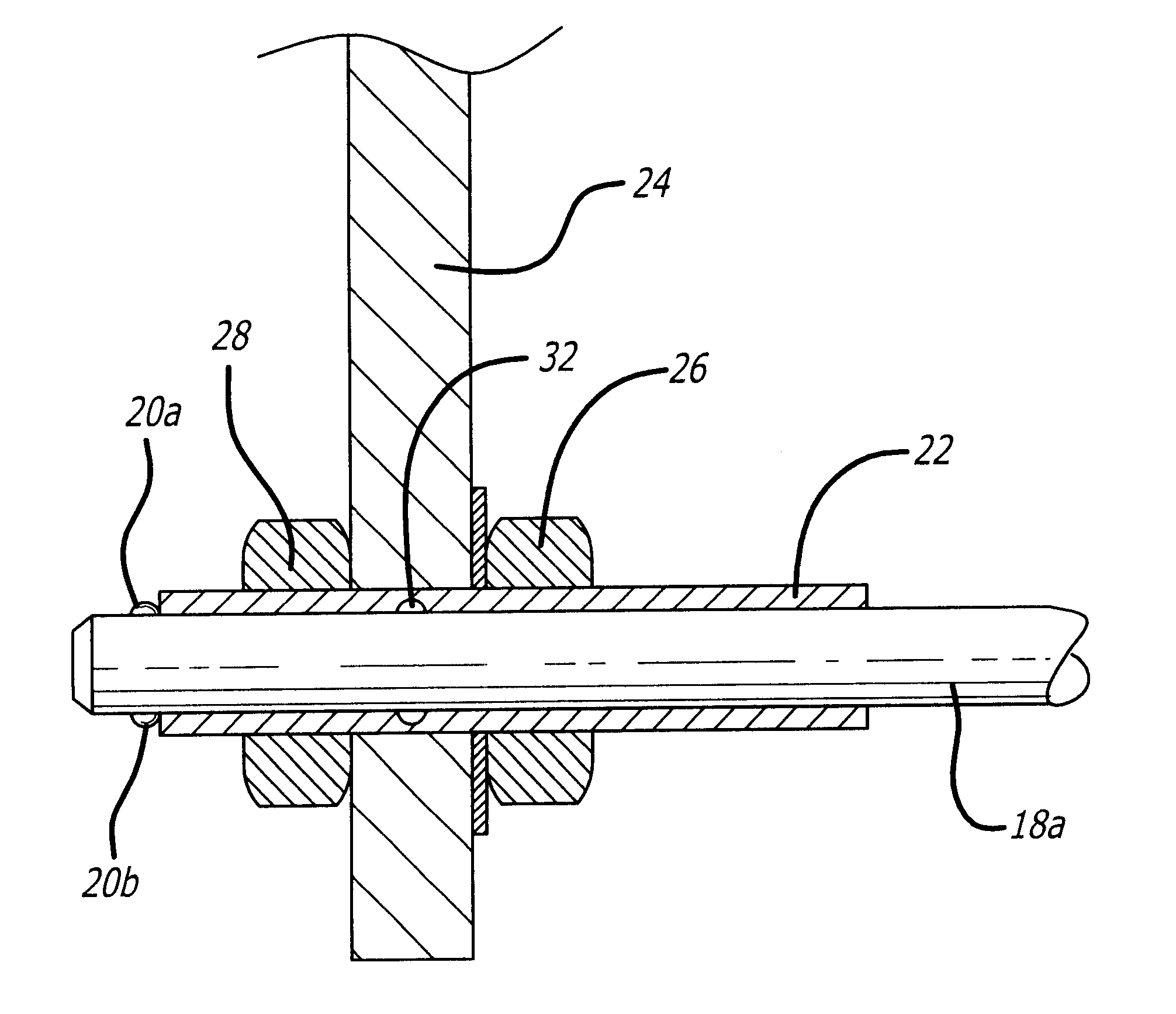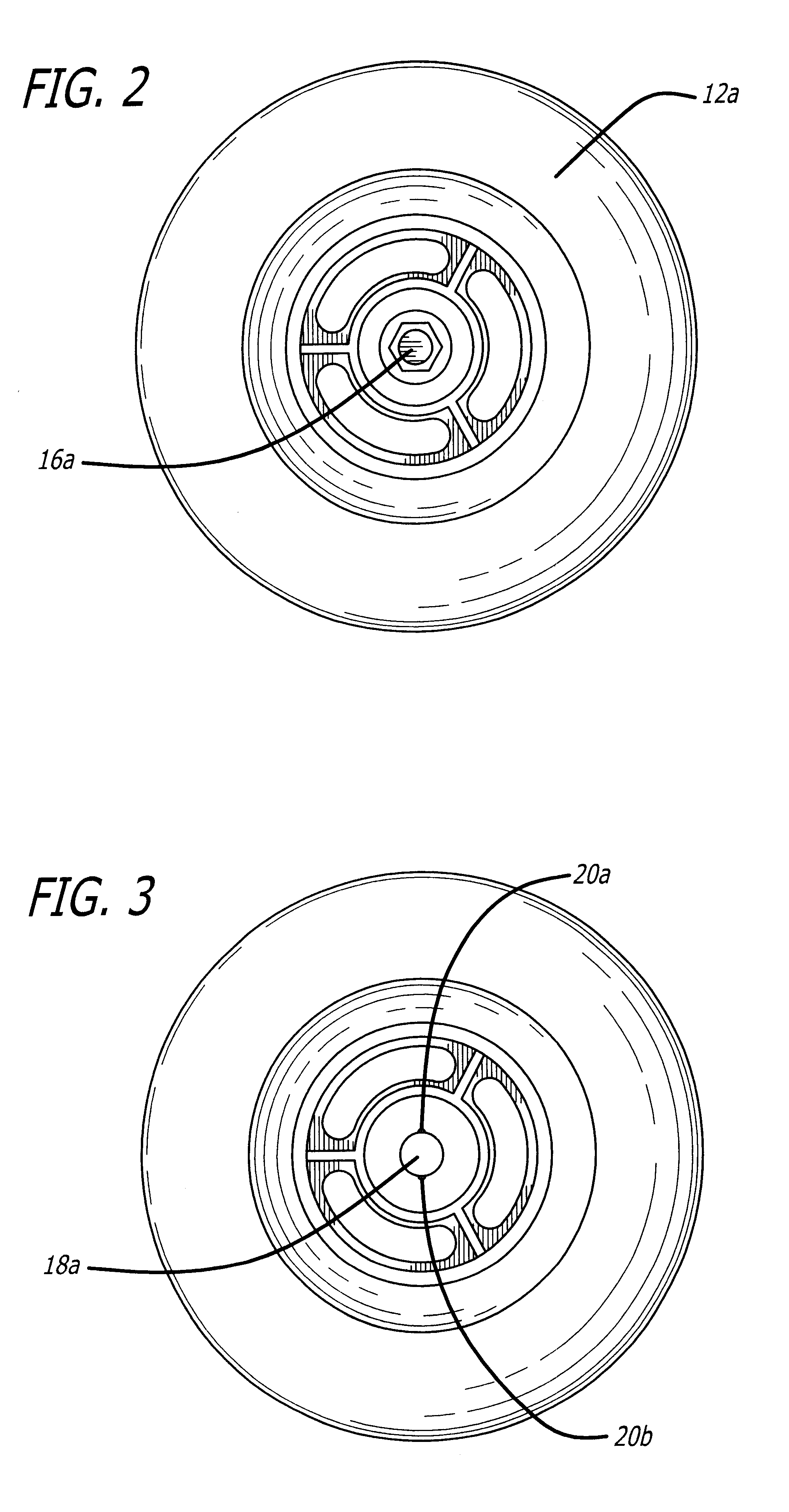Secure wheel locking system
- Summary
- Abstract
- Description
- Claims
- Application Information
AI Technical Summary
Benefits of technology
Problems solved by technology
Method used
Image
Examples
Embodiment Construction
FIG. 1 illustrates a wheelchair 10 having rear wheels 12a and 12b. The rear wheels 12a and 12b are mounted on a wheelchair frame 14. The wheels are of a quick-release type, with respective quick release buttons which, when depressed, permit a user to remove the respective wheels. One quick release button is shown in FIG. 1. A respective quick release button 16b (not shown) is associated with wheel 12b. FIG. 2 illustrates the exterior of the wheel 12a, while FIG. 3 illustrates the interior of the same wheel. An axle 18a extends from the wheel 12a, and the wheel 12a rotates about the axle 18a. Two protrusions 20a and 20b, typically ball bearings, extend from near the end of the axle 18a.
The axle may be of the type available from AVIBANK MANUFACTURING, INC. of North Hollywood, Calif. under the trade name Ball-Lok.RTM., which describes a line of spring-loaded detent pin products. The user presses a button to retract two spring-loaded detent pins that are normally biased to protrude from...
PUM
 Login to View More
Login to View More Abstract
Description
Claims
Application Information
 Login to View More
Login to View More - R&D
- Intellectual Property
- Life Sciences
- Materials
- Tech Scout
- Unparalleled Data Quality
- Higher Quality Content
- 60% Fewer Hallucinations
Browse by: Latest US Patents, China's latest patents, Technical Efficacy Thesaurus, Application Domain, Technology Topic, Popular Technical Reports.
© 2025 PatSnap. All rights reserved.Legal|Privacy policy|Modern Slavery Act Transparency Statement|Sitemap|About US| Contact US: help@patsnap.com



